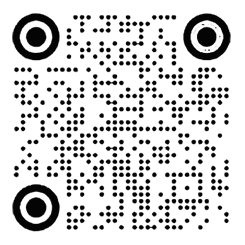
It takes years to develop the skill to cut out the distinctive patterns of each pair of Tricker’s hand-made shoes and boots. Our clickers have to judge which direction to cut the leather in, and how the piece of hide they are working with will stretch to fit a foot perfectly. Only when they are perfectly satisfied will a clicker sharpen their blade and set to work, cutting against the brass-bound edge of their pattern, and making the distinctive ‘clicking’ sound that gives their craft its name.
Sewing together the different pattern pieces to create a single upper for a shoe or boot is a craft that takes years to learn. This is where our shoemakers add eyelet holes, rivets and the brogue patterns that make every pair of Tricker’s stand out from the crowd. It’s also the only part of our factory where ‘skiving’ is permitted – indeed encouraged – because that’s the name of the painstaking process of hand-thinning leather. Once the uppers are closed, they are hung for a number of days to moisturise, so that the leather will always be supple and flexible. Every pair is then hand-labelled and numbered, giving it a unique identity.
Our shoemakers stretch the closed uppers on individual lasts for all our designs. It’s a delicate operation that requires a brilliant eye, heat, moisture and the occasional touch of force. The upper is then secured to the woven rib on the insole with small nails and staples to hold the shoe together until the welt is attached. The welt joins insole to upper on every pair of Tricker’s shoes and boots. The sole is then stitched onto the welt. Because our welted shoes are sewn rather than glued together, a skilled craftsman or woman can unstitch and repair them whenever it is needed.
Our shoemakers now add a wooden shank to the sole, making the shoe strong and supportive. The cavity between welt and insole is then filled with a layer of cork, which moulds to the wearer’s foot, providing insulation and comfort. The cork is then covered with a leather mid-sole for protection. At this stage the chosen sole is added – whether leather or rubber – and excess is rounded off and lock-stitched to the welt. After a number of days drying, the heels are gradually built up and added to each shoe or boot. Now, it is ready for finishing.
No Tricker’s shoe or boot could ever be accused of being rough around the edges. Each pair is hand finished by one of our shoemakers, who trim the soles and heels and buff the edges until they are smooth. It can take years of experience and a very good eye to master this traditional freehand skill. Our craftsmen and women then stain, polish and wax the leather uppers to create a waterproof finish, before ‘bunking’ the soles by adding decorative patterns with tools heated over a naked flame.
In the shoe room, a sock liner is fitted to the shoes or boots for comfort. The finished pair is then cleaned, and the uppers are dressed to create a patina using our unique blend of creams and polishes. After hanging overnight one last time to moisturise the shoes or boots are polished and burnished by hand to give them their final distinctive lustre. Then they must pass a final inspection before they are laced, wrapped in cotton cloth and packed into their box together with their Tricker’s shoe bags. After 265 different processes, all carried out by hand, another pair of Tricker’s hand made shoes or boots are finally ready for dispatch.
 Wechat App
Wechat App
 WeChat
WeChat
 Tiktok
Tiktok
 Redbook
Redbook